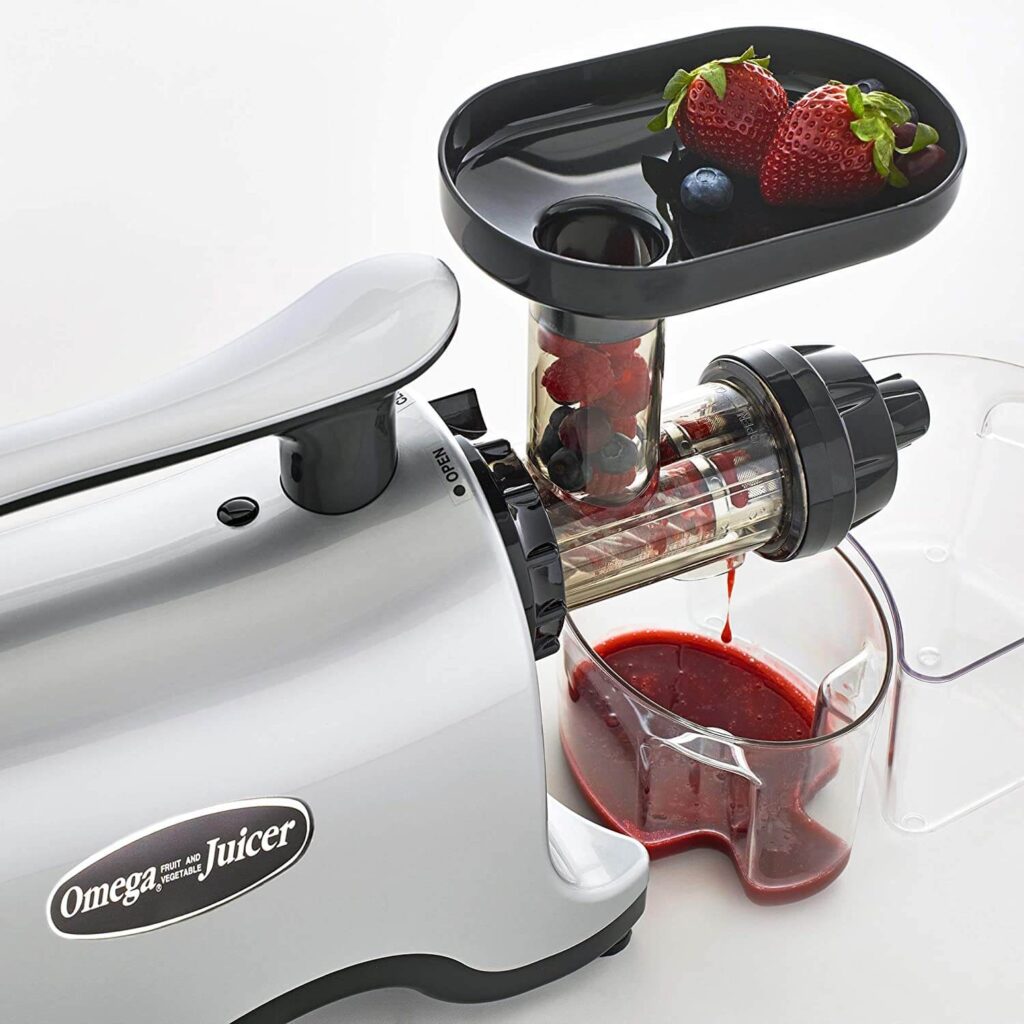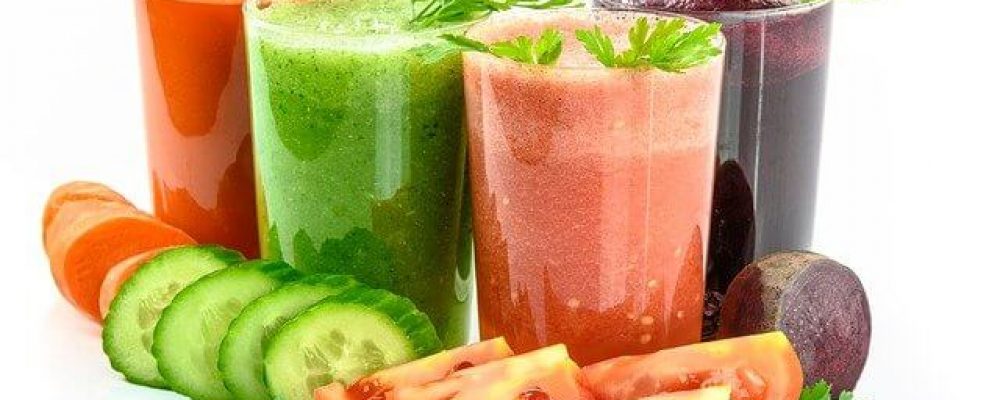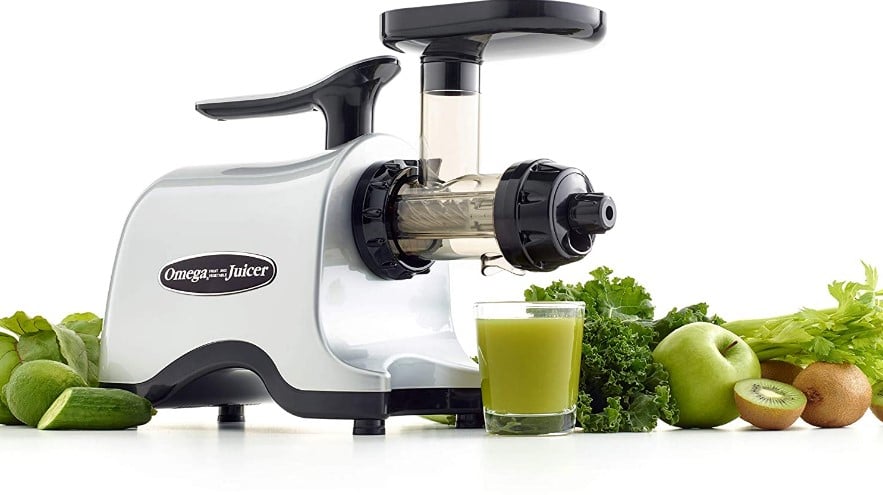The type of juicer you choose for your kitchen can depend on many factors. Do you want a low-tech or high-tech device? How much time do you have to spend cleaning up? What types of ingredients do you like to juice, and what types of recipes are you looking to make? All these questions will help determine which type is best for your lifestyle. Here we discuss 7 types of juicers and their pros and cons so that it’s easier to find the right one for your needs!
Contents
Types of Juicers
There are different types of juicers available in the market. Not everything will fit into your requirements. So you need to know your needs before you go out and buy a juicer.
Low-tech: These types of juicers don’t use any electricity, though they can be used for other tasks around the kitchen like crushing ice or making soup stock. They are very good if you’re looking for an easy way to make juice at home without all the hassle associated with extra parts and cleanup time!

High-Tech: High-tech types of juicers have lots more power than low-tech models, but usually come with additional costs as well as added maintenance (cleaning). Though these types of machines may take up more space in your cabinet – some even require their own outlets – it’s worth considering one type that has been rated highly on the market and has a long-term service warranty.
To make your decision easier, we’ve put together some types of juicers that are available to help you find one that matches your needs best! We’ll cover low-tech types – which require no electricity or have easy cleanup methods; high tech types with more power but also added maintenance; types for different budgets and lifestyles; as well as single auger types that can juice wheatgrass efficiently.
1. Centrifugal Juicers
The first type of juicer is the centrifugal juicer. This device uses a spinning blade to cut up fruits and vegetables, then forces them through a mesh filter where the pulp and juice are separated.
Centrifugal juicers use rotating blades to spin ingredients around in order for them to compress against each other so they can produce the best amount of yield possible per fruit/veggie – typically higher than types two through four, but not as much as types seven or eight.
The result is that you get more types of juice–including citrus and wheatgrass–and it’s less likely for leafy greens like spinach or kale to wrap around blades. It has some downsides though; this machine creates heat so if you’re looking for raw juices, which contain living enzymes, then this won’t be an option for you. Plus it can create excess foam in your drink! If those types of things don’t bother you too much, go for the centrifugal!
The centrifugal juicer is the most popular type of juicer. They are easy to use and can extract all types or combinations when you have a hard time with softer fruits/vegetables like oranges, grapes, etc. The downside is that they don’t juice leafy greens very well so if your goal is to incorporate them into your diet then this might not be the best option for you.
2. Masticating Juicers
The second type of juicer is the masticating juicer. It’s a little different than the first one because it uses an auger to grind up fruits and vegetables so they can be pressed through a filter while extracting as much juice as possible.

The downside is that these types of machines are slow, but if you have time to spare this might just be your best bet! You’ll get plenty of juice from leafy greens like spinach or kale since there aren’t any spinning blades, plus with its slower speed, it won’t create foam in your drink either! If ease and efficiency are what you’re looking for then this machine will work well for you.
3. Single-Auger Juicer
Masticating types of juice are so easy to clean because the auger does all the work for you, but if you don’t mind a little elbow grease then this type is also an option. The single-auger juicer operates in basically the same way as types one and two with spinning blades that extract juice from fruits and vegetables, except there’s only one blade instead of two or three which makes it more difficult to process leafy greens like spinach and kale.
These types tend to be cheaper than other types since they’re less complex and thus require fewer parts – plus their simple design means they’ll last longer without breaking down! But if your budget doesn’t allow for new appliances periodically then these machines might not be for you.
Single augers are the types of juicers that extract liquid by chopping up ingredients with a blade. The spinning at high speeds produces natural centrifugal forces to separate the juice from the pulp, and this type is said to be more efficient than types five or seven since it can handle any types or combinations you throw at it without breaking down.
4. Double-Auger Juicers
The double-auger juicer has two augers for extracting juice from fruits and vegetables, which means that it is able to handle leafier fruit or vegetables. The double-auger juicer also extracts the maximum amount of liquid without requiring any additional pressure because they’re equipped with a hydraulic presser system to get those last juices out.
It’s worth noting that this type only comes in one style – meaning you have no control over how fine the juice will be since it operates at a high speed. That isn’t an issue if all you want is a carrot or apple juice but what about other types? Type four has its limitations so make sure you know what kind of fruit/vegetable combinations work best before purchasing.
5. Twin Gear Juicers (Triturating Juicers)
Of all the types of juicers available, a twin gear juicer offers the best extraction efficiency and nutrient retention. The twin gear juicers are also known as triturating juicers because of their three clearance processes. The best thing is that the twin gear juicer can extract the most juice and keeps essential nutrients and enzymes in mostly complete condition.
Read More: The Best Twin Gear Juicers for Your Home in 2021
The twin gear juicer is the Rolls Royce of juicers. It utilizes two types of gears with a crushing and grinding mechanism so it can handle any types or combinations you throw at it. Twin Gear Juicers are more powerful than Single Gear Juicers and can extract any type of juice. They are also the only types to produce a dry pulp-less juice.

An example of a twin gear juicer would be Omega’s NC900HDC Nutrition System Masticating Dual-Stage Slow Speed Juicer.
6. Hydraulic Press Juicers
Hydraulic press juicers are the newest type of juicers and have quickly become a favorite among those who like to juice wheatgrass. The hydraulic press operates by using raw pressure (hence the term “hydraulic”) which creates an environment that is perfect for extracting liquid from the fiber. This type operates at slower speeds but produces more quantity than types five or seven since it can handle any types or combinations you throw at it without breaking down.
7. Manual Press Juicers
Manual juicers use power from the user to extract the juice from ingredients, using a lever system for force. Manual juicers are mostly used in juicing for citrus fruits.
Manual press juicers are a great choice for those who want to juice small quantities of fruits and vegetables. This type is the most labor-intensive but produces more types than types five or six since it doesn’t need electric power to run.
Factors to look into before Buying a Juicer
As we have already discussed the different types of juicers above, the following factors will help you to decide which types of juicers you should buy.
Power
It is important to know beforehand how much power is required for the type of juicer you have shortlisted. If the power consumption is too much you might often end up with a power cut or your electricity bill will go up.
Size of the extractor
The types of juicers we have discussed so far come in different sizes with various types and capacities. If you are looking for one that is larger, then it would be wise to consider types six and seven listed above while if you want one which occupies less space, then types four and five are best suited for you. The type size also determines how fast can the extraction process take place as well as what quantity of fruits juice can be extracted at once.
Features
Some types of juicers come with a built-in cleaning system while others require manual washing and drying after use, so before you make your final decision on which type to buy, it would be better if you research well about each one so as not to get frustrated at any point in time after purchase. Some types also have less noisy operation when compared to other types. The amount of noise depends largely on how fast is the squeezer extracting juice from fruits or veggies and this varies greatly depending on what design has been used for that particular model.
Cost
A good quality electric juicer costs between $150 -$300 but manual press juicers may cost only half of that price depending on their make-up design and features mentioned in the earlier paragraphs.
The One that Matters to You
Some types of juicer may be better for you than others. For example, if a person wants to make juice quickly then an electric one would probably be the best choice while someone who needs more control over his or her machine might prefer manual press ones.
Generally speaking, most people just want their drink in a minimum amount of time and so they will naturally go with an electrical type because it seems like the easiest option due to all its features that can help extract juices from fruits and vegetables faster. But there are also some disadvantages when using this kind such as having noise levels higher than what other types usually have which could affect anyone nearby during operation time.
So before you make your purchase, it’s best to know what types of juicers there are first and go from there.
Above all else, however, you should choose the one that will be better for you than others. For example, if a person wants to make juice quickly then an electric one would probably be the best choice while someone who needs more control over his or her machine might prefer manual press ones.

Final thoughts
I hope this blog post was helpful in narrowing down some options on types of juicer that may be best suited for your needs! If you have any questions, please don’t hesitate to ask.



















